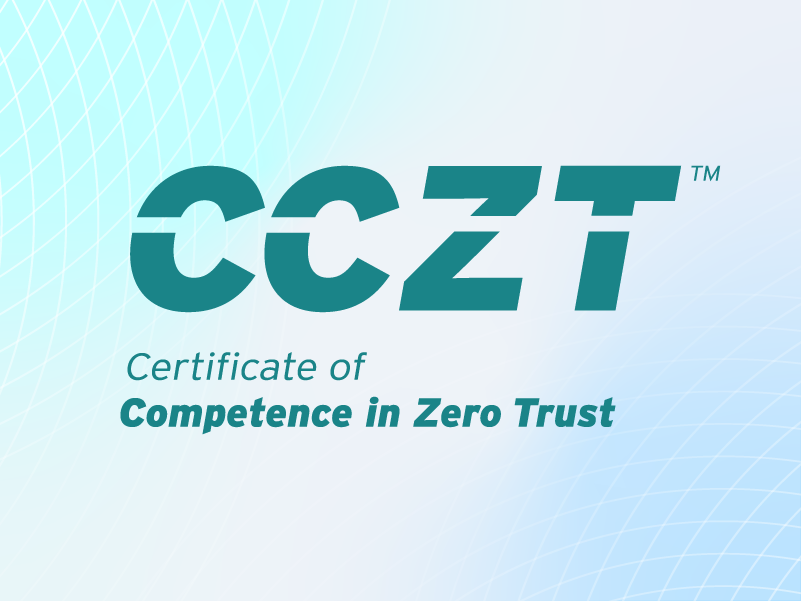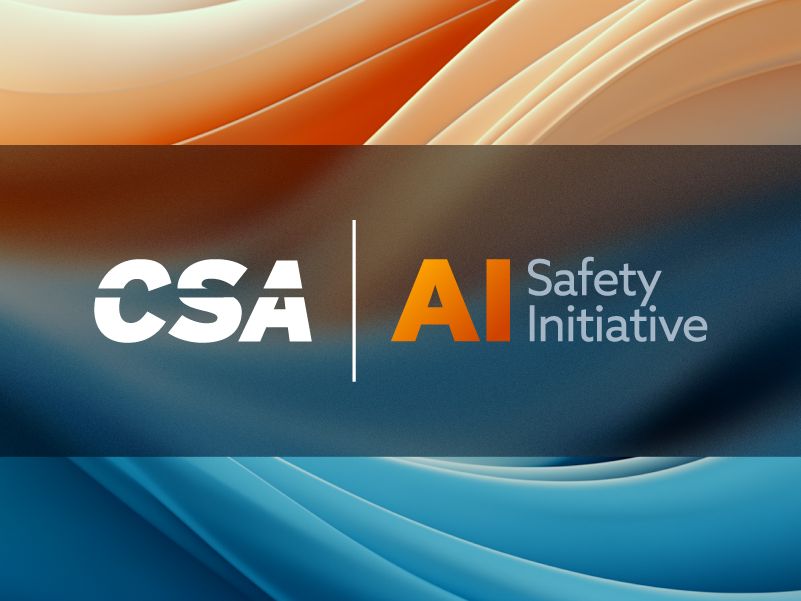Bridging the Gap: Using AI to Operationalize Zero Trust in Multi-Cloud Environments
Published 05/02/2025
Written by Advait Patel, Senior Site Reliability Engineer, Broadcom.
Reviewed by Aparna Achanta, Principal Security Architect, IBM Federal Consulting.
Many businesses are integrating multi-cloud strategies today. The approach provides flexibility and eliminates dependence on one provider. However, security fragmentation represents some obstacles in conjunction with the system.
Many organizations are now adopting multi-cloud deployment strategies. The integrated use of several cloud providers by companies helps businesses reduce costs and achieve higher flexibility. Organizations benefit by avoiding reliance on a single platform. However, multiple clouds make security administration a complicated problem to solve. Because every cloud provider needs to maintain its own set of security protocols, and security tools.
These inconsistencies can leave security gaps and present protection challenges. The fragmentation of security tools can create complex management situations. As a result, businesses may struggle to secure data and apps effectively.
Zero Trust Isn’t Natively Interoperable Across Clouds
Zero Trust is a well-known security model. But it has limitations, too. It’s not natively interoperable across different cloud environments. Each cloud platform has its security controls and tools. They do not always align with the Zero Trust principles. This makes it harder to enforce security policies consistently. To implement Zero Trust across multi-cloud, companies need third-party solutions. These solutions help bridge gaps between different cloud environments. Without them, obtaining unified security becomes a complex task.
Zero Trust Complexity in Multi-Cloud
Zero Trust security models face challenges in multi-cloud environments. Different cloud platforms introduce complexities that make implementation problematic. The main issues arise in identity federation, policy silos, and operationalizing Zero Trust. Let’s get deeper into these challenges.
Identity Federation Issues
Identity federation allows users to access multiple cloud platforms securely. However, the management systems prove difficult to integrate. Because multiple clouds exist in one system. Therefore, a different approach exists between cloud providers to handle user management and permission authorization. In addition, the policy enforcement becomes challenging because of the inconsistent identity management systems between different cloud providers.
Policy Silos (e.g., AWS IAM vs. Azure RBAC)
Cloud platforms like AWS and Azure each have their policy management systems. For example, AWS uses IAM (Identity and Access Management). While Azure relies on RBAC (Role-Based Access Control). These systems don’t meticulously work together, creating policy silos. These silos make it challenging to enforce consistent security policies across all cloud environments. Companies need to manage policies separately for each platform. This often increases complexity and potential security gaps.
How To Operationalize Zero Trust with AI
Organizations implementing Zero Trust in multiple cloud networks require sophisticated tools. It benefits greatly from AI technology for automation and operational deployments. The system tracks user activities between different platforms for monitoring and identification purposes. Moreover, it performs anomaly detection alongside real-time security measure implementation.
The implementation of AI improves Zero Trust strategies so they become more efficient and scalable. AI automation systems reduce both human interaction and increase the speed of security protocol adoption.
1. Use of AI to Monitor Behavior and Detect Anomalies Across Providers
Security management across multiple cloud providers maintains high complexity. Because of the diverse nature of individual cloud providers. AI performs a central function in the monitoring process while securing activities for users. The continuous analysis of system behavior through AI allows it to identify security risk indicators. The management solution enables uniform monitoring activities. These span all cloud systems, including AWS, Azure, and Google Cloud. AI models produce real-time assessments of user activities to detect normal behavior patterns by identifying deviations from typical user actions. The system detects anomalies that automatically launch security action protocols and alert the administrators. An early adopted defense mechanism protects systems from secret access attempts.
2. AI Models for User Behavior Analytics (UBA) and Workload Trust
For achieving multi-cloud security, User Behavior Analytics (UBA) becomes vital because it functions through Artificial Intelligence. AI models process multiple patterns of user interactions that occur across various cloud platforms. These models determine if user activity follows previously defined security standards. Moreover, it identifies and highlights suspicious activities through its flagging system when users display irregular patterns of behavior or access sensitive information. AI performs workload trust management by evaluating the security position of workloads across various multi-cloud platforms. The combination of workload monitoring through AI helps organizations grant access to critical resources only to workloads that demonstrate trustworthiness.
Technical Architecture of Zero Trust System
The technical architecture of Zero Trust over a multi-cloud environment integrates AI engines to enforce security. These AI-powered systems continuously evaluate user behavior, access permissions, and workload trust across multiple cloud platforms. The architecture is designed to verify that every request is authenticated and validated. Therefore, it maintains a strict "never trust, always verify" policy.
The diagram above represents the Zero Trust framework. It shows AI engines integrated into the multi-cloud fabric, continuously monitoring user access, behavior, and workload trust across different cloud platforms (AWS, Azure, Google Cloud). Moreover, it highlights AI's role in detecting anomalies, validating user actions, and providing secure access.
Ingestion of Logs from Cloud-Native Tools (CloudTrail, Azure Log Analytics)
The foundation of a strong Zero Trust implementation requires initial log ingestion as its first step. The cloud-native tools AWS CloudTrail and Azure Log Analytics present essential knowledge about user activities and system behavior. You can achieve comprehensive visibility of cloud infrastructures by consuming logs from these tools.
For instance, CloudTrail provides a detailed history of API calls within AWS. On the other side, Azure Log Analytics gives logs from a variety of Azure resources.
Analyzing these logs is important for detecting anomalies. Moreover, it helps you keep regulatory compliance and improves overall security posture. Integrating log data from both AWS and Azure into a centralized platform enables AI models to process and analyze the data for suspicious activity. Further, it helps maintain a consistent security policy across platforms.
Use Case Scenarios
Example 01: AI Detecting Privilege Escalation Across AWS and Azure
Privilege escalation is a major challenge involved in AI detection. The typical multi-cloud setting creates opportunities for privilege elevation attacks. The occurrence of privilege escalation typically happens when someone unauthorized obtains higher-level access permissions, including administrative rights.
AI analyzes log data patterns within AWS CloudTrail in combination with Azure Log Analytics to identify such behavior. When a user randomly obtains administrative rights in a single cloud platform, the AI system can mark this access as potentially malicious.
By cross-referencing data from both cloud providers, AI allows abnormal access patterns to be caught early. Plus, it prevents potentially damaging breaches.
Example 02: ML Model Adapting Access Policies Dynamically
Machine learning (ML) can dynamically adjust access policies based on real-time user behavior. In a multi-cloud environment, different clouds may have varying security protocols. For instance, an ML model could detect that a user’s access patterns have shifted (e.g., accessing resources outside of their usual activity). The system would automatically adjust the user’s access level. Moreover, it grants them limited permissions to sensitive data until their behavior stabilizes. Additionally, it eliminates the risk of compromised credentials or unauthorized data access.
Recommendations
1. Choose Open APIs, Standardized Identity Brokers (OIDC/SAML), and Integrate AI Tools
Open APIs and standardized identity brokers promote ideal connection integration and detailed interoperability between organizations. Two standard authentication protocols commonly used are OIDC (OpenID Connect) and SAML (Security Assertion Markup Language). These identity standards enable effortless interfacing operations between providers of identity and cloud services, combined with AI-based security solutions. Moreover, these ensure cohesive and efficient security management.
The capability to connect AI tools from third parties is possible through open APIs. The use of open APIs and standardized identity brokers allows better data sharing capabilities and strengthens real-time monitoring capabilities, and improves decision-making capabilities of AI models.
Introducing these standards helps you to achieve a flexible and scalable Zero Trust implementation throughout your multi-cloud deployments. The solution also features the capability to adapt to emerging technologies.
2. Regular Policy Alignment with AI Validation Feedback Loops
A secure multi-cloud environment depends on constant alignment between security policies and inputs from AI models. The models must undergo continuous training tests to address new emerging security threats. The assessment ensures operational effectiveness of security policies.
Moreover, the AI models receive accurate prediction and decision evaluation data through feedback loops. Access policies can be improved using the latest behavior patterns and threat intelligence, which organizations receive through the feedback mechanism. Your Zero Trust framework will stay responsive to new risks. It will adapt through security processes with feedback loops.
Final Thoughts
AI plays a crucial role in filling the gap across disparate Zero Trust architectures. The system enables smooth integration together with ongoing observation between different cloud environments. The ability of AI to handle enormous data volumes and identify irregularities and apply policies in real-time enables companies to uphold robust security measures. The implementation of AI enables businesses to authenticate their Zero Trust security approaches as well as their ability to remain adaptable and persistent. The solution protects businesses from changing security threats that occur across various cloud environments.
About the Author
Advait Patel is a Senior Site Reliability Engineer with over 8 years of experience in cloud computing, site reliability engineering, and cloud security. He holds a Master’s degree in Computer Science from DePaul University, specializing in Software Engineering and Cloud Computing. Advait is currently at Broadcom, where he develops and maintains a globally distributed SaaS-based metrics monitoring platform. His expertise includes technologies such as Kubernetes, Terraform, Ansible, and Python. He has a strong focus on vulnerability management, compliance frameworks, and disaster recovery. Advait is an active contributor to the tech community and has presented at multiple conferences, authored articles on Docker, cloud security, and containerization, and is a technical reviewer for various IEEE and ACM publications.
Aparna Achanta is a Principal Security Architect at IBM Federal Consulting. Aparna oversaw major mission-critical projects for U.S. federal agencies. While at IBM, she successfully implemented the Zero Trust framework in federal agencies. Aparna established an Architecture and Security Review Board for D365 and Power Platform applications, defining security requirements and shaping best practices for application architecture development teams. With over 10 years of experience, Aparna has designed secure digital transformation projects for large federal clients, greatly streamlining their processes. Aparna is a motivated person who is committed to giving back to the cybersecurity industry. She is an active mentor, author, peer reviewer, and speaker.
Aparna is a Founding Member of the WomenTech Network and an Executive Board Member of the Women in CyberSecurity Austin Affiliate.
Aparna can be reached online at her website or her LinkedIn.
Related Resources



Unlock Cloud Security Insights
Subscribe to our newsletter for the latest expert trends and updates
Related Articles:
Why Compliance as Code is the Future (And How to Get Started)
Published: 12/04/2025
Killing Standing Privileges: Why Just-in-Time Access is the Future of PAM
Published: 12/04/2025


.jpeg)
.jpeg)
.jpeg)
.jpeg)